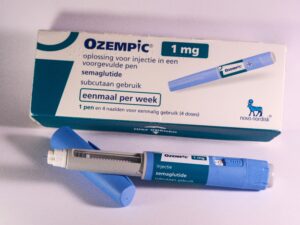Moderna announced it will submit a request for an Emergency Use Authorization in the U.S. and the EU Monday, November 30. A final analysis of phase 3 clinical trials demonstrates the company’s mRNA1273 vaccine is 94.1 percent effective in preventing COVID-19 infection and shows an astounding 100 percent efficacy against preventing a severe case of the disease.
The Massachusetts-based biotechnology company further stated the vaccine was consistently effective across race, age, gender, and ethnicity demographics.
Out of the 30,000 participants,196 volunteers contracted COVID-19, of which 185 were given a placebo, which was simply a saline solution, and 11 received the vaccine. There were 30 severe cases reported; all were in the placebo group. This means the vaccine was 100% effective in preventing severe cases.
The 196 reported COVID-19 cases in clinical trials included 33 adults 65 and older and 42 volunteers from racially diverse demographics, which included 29 Latinos, 6 Blacks, 4 Asian Americans, and 3 multiracial volunteers. One death related to COVID-19 was reported in the placebo group.
Moderna’s latest announced effectiveness is marginally lower than an interim study released Nov. 16, which showed 94.5% efficacy, a difference that Moderna Chief Medical Officer Tal Zaks said was not “statistically significant.”
Dr. Paul Offit, a member of the FDA’s vaccine advisory committee, said, “This is striking, these are amazing data.”
According to Zaks, “We believe that we have a vaccine that is very highly efficacious. We now have the data to prove it. We expect to be playing a major part in turning around this pandemic…At this level of effectiveness, when you just do the math of what it means for the pandemic that’s raging around us, it’s just overwhelming.”
Azra Ghani, Chair in Infectious Disease Epidemiology at Imperial College London, stated that the results were confirmation that the vaccine was exceedingly effective in preventing severe cases.
“Whilst this does not exclude some risk of severe disease after vaccination given the relatively small number of severe cases, these results suggest very high efficacy,” Ghani said.
There were no new side effects since Moderna’s interim study, which revealed the most common side effects were fatigue, injection site redness, and pain, headache, and body aches, which occurred after the second inoculation and were not long-lasting.
Zaks said the symptoms that manifested in some participants were normal for “such a potent vaccine.” He emphasized he saw no noteworthy safety concerns with the vaccine.
Pfizer announced on November 20 its vaccine demonstrated 95 percent efficacy and was filing for an EAU; Moderna”s November 30 announcement made its vaccine the second candidate to request emergency approval. Both vaccines far exceed the 50 percent efficacy benchmark established by the FDA.
The Vaccines and Related Biological Products Advisory Committee (VRBPAC) will meet in open session on Dec. 10 to review Pfizer’s data and make a recommendation to the DA. Moderna’s data will be reviewed a week later.
Immediately following approval, Moderna plans for its vaccine to be shipped to distribution points throughout the U.S. by the Operation Warp Speed program and pharmaceutical distributor McKesson Corp.
Although both leading candidates must be stored in freezers, distribution of Moderna’s vaccine poses less of a logistical problem since it has a shelf life of 6 months when stored at -4 degrees Fahrenheit, while the Pfizer must be stored at -94 to -112 degrees Fahrenheit, requiring special thermal equipment.
From Moderna’s November 30, 2020 press release:
“Moderna is working with the U.S. CDC, Operation Warp Speed and McKesson (NYSE: MCK), a COVID-19 vaccine distributor contracted by the U.S. government, as well as global stakeholders to be prepared for distribution of mRNA-1273, in the event that it receives an EUA and similar global authorizations and approvals. By the end of 2020, the Company expects to have approximately 20 million doses of mRNA-1273 available in the U.S.”











